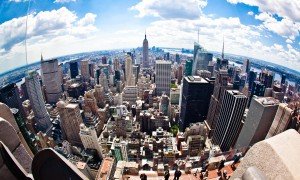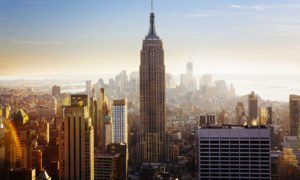New York City is the most populous city in North America. It is the most densely populated city in North America and one of the world’s great capital cities. Although a lot of tourists think that Manhattan is the only part of New York City, the city consists of 5 boroughs: Manhattan, Brooklyn, Queens, the Bronx and Staten Island. New York City contains a diverse mixture of 8 million residents. NYC has people from every nationality, some of which include Irish, Italian, Chinese, Russian, German, Greek, Jamaican and everything in between. The diversity of NYC is reflected by its many cultural events some of which are the Puerto Rican Day parade, the Caribbean day parade and the St. Patrick’s Day parade.
Planning Your Trip to NYC
Before visiting New York City, it is recommended to contact NYCGo.com, which is the official website of the New York City Guide. The site provides a wealth of information about the city of New York. They also provide the Official NYC Guide, a free, pocket-sized guide that features targeted itineraries, neighborhood highlights, a calendar of events, coupons and information about accommodations, transportation, sightseeing, cultural attractions, nightlife, shopping, sports and services. The guide can be downloaded NYCGo.com or a printed version of the guide can be ordered.
Safety Tips in New York City
The following are some basic safety tips for visiting New York City. Although the Big Apple is generally a safe city, it should be mentioned that visitors should avoid dark, deserted and dimly lit areas of the city, particularly at night. It’s also a good idea to hide your money from public view and avoid carrying large sums of money. Make sure that you carry your wallet in front pocket and firmly hold your purse close to your body. Be vigilant when riding public transportation, particularly at night. If you must drive, make sure that you park your vehicle in well-lit areas, with your doors locked and windows closed.
Smoking and Drinking
Smoking is prohibited in all office buildings, public areas, taxis, bars, restaurants and shops. It is also prohibited on all public transportations. The minimum legal age to buy or drink alcoholic beverages is 21.
Driving Licenses
If visiting from another country other than Canada, visitors should obtain an international driving permit. Drivers are required to carry a vehicle registration card or rental contracts and proof of photo insurance at all times. In New York City, gas is sold by the gallon. Driving is on the right-hand side of the road.
Area Code
There are currently four area codes in New York City. Manhattan uses 212 and 646. The other boroughs use 718 and 347. Cell phones in New York City usually have an area code of 917. Calls between these area codes are considered local calls, but you must first dial 1, then the area code and finally the seven digit phone number. This applies to calls made within your area code as well. Other area codes used include 800, 888, 877, and 866, which are toll-free area codes.
Tipping
Tipping amounts in New York City vary depending on the services provided. In hotels, an average bellhop tip is at least 1$ per bag. You should also tip the cleaning staff and the doorman or concierge if they have been helpful to you. In bars, clubs and restaurants, the tip is usually 15% to 20% of the bill. The tip for taxi drivers is usually 15% to 20% of the bill as well. Bartenders usually get 10% to 15% tips while valet parking attendants receive $1 per car.
Tourist Information Services
There are five Official NYC visitor centers and kisoks throughout the city. These visitor centers are operated by NYC & Company. They also operate New York City’s official visitor guide at www.nycgo.com. They offer the popular Official NYC Guide, which is a free guide detailing hotels, restaurants, theaters, attractions, events, and more. The guide is free to order and can be obtained by calling 1-800-692-8474.
Essential Travel Information
The following are essential travel information about New York City:
Population
8.4 million
Boroughs
New York City consists of five boroughs: the Bronx, Brooklyn, Manhattan, Queens and Staten Island. These boroughs are linked by various bridges, tunnels and ferries.
Time Zone
New York City is on Eastern Standard Time (EST), which corresponds to GMT -5 hr. From the second Sunday in March to the first Sunday in November, Daylight Saving Time (DST) is observed. During Daylight Saving Time, clocks are moved one hour ahead of standard time.
Language
English is the official language but many New Yorkers also speak Spanish.
Diversity
New York City is one of the most diverse cities in the World.
Climate
Spring and Fall are the most temperate seasons to visit the city. Winter and Summer in NYC tend to be quite extreme, but offer many more activities.
Money & Currency
The U.S. dollar is the main currency used in New York City. The “$” symbol is the symbol used to denote the American Dollar.
Taxes
A sales tax of 8.875% is charged on most goods, some services and on meals.
Passports & Visas
A valid passport is required for anybody entering the U.S. by air travel.
Weights and Measures
New York Ciy and all of the USA uses the American system.
Electricity
Voltage in New York City, as well as the rest of the U.S. is 120 V AC at 60 Hz.
Important Numbers
For any emergency (police, fire or ambulance), dial 911. It is a toll-free number from any phone. For directory assistance, dial 411. For all non-emergency government agencies, dial 311 or 212-NEWYORK.
Transit Information
The MTA is responsible for all public transportation within New York City. You can visit their site for bus and subway routes, maps and schedules.
Newspapers
New York City’s has three major daily newspapers: The New York Times, Daily News, New York Post.
Wheelchair Accessibility
In New York City, most public buildings, attractions, hotels and restaurants have wheelchair access. NYC’s public transit system also provides wheelchair access.
Public Holidays
New York City observes the following holidays. During these holidays, most government buildings, banks and many stores are closed:
- New Year’s Day – January 1
- Martin Luther King, Jr., Day – The third Monday in January
- Presidents’ Day – The third Monday in February
- Memorial Day – The last Monday in May
- Independence Day – July 4
- Labor Day – The first Monday in September
- Columbus Day – The second Monday in October
- Veterans’ Day – November 11
- Thanksgiving Day – the fourth Thursday in November
- Christmas – December 25
























Lu Ann Roth
April 6, 2022 at 4:29 pm
I would like to receive a free New York City visitor guide through the regular mail(paper copy)
Cassandra LEGER
October 6, 2024 at 3:34 pm
I would like to receive a free NYC visitor guide (paper copy) through the mail.
Patrick J Andreoli
October 21, 2024 at 11:01 pm
I LOVE NEW YORK!
Beverly brown
October 28, 2024 at 5:37 am
None
TINA AYERS
November 27, 2024 at 5:01 pm
I HOPE TO VISIT NYC THIS COMING YEAR
JEFF COSTIGAN
February 13, 2025 at 5:41 am
HI, HOW CAN I REQUEST A COPY OF THE 2025 NYC TRAVEL GUIDE BY MAIL. MY FRIEND IS VISITING SOON, WANT TO GIVE IT TO HIM SO HE CAN USE WHILE I AM AT WORK. PLEASE LET ME KNOW, REALLY APPRECIATE THIS. HAVE A FANTASTIC DAY. BYE, JEFF COSTIGAN.